|
Economy:
Since independence Botswana's economic progress from being one of the poorest to be amongst the fastest growing
economies in the world, it has been one of the few success stories of the African continent. Twenty years ago, the
country was one of the 20 poorest countries in the world. Today, it is considered the richest non-oil producing
country in Africa. Botswana has one of the 3 richest diamond-bearing formations in the world and is now the world's
largest producer of diamonds (by value), providing 29.3% of the world's diamonds. Only 5% of Botswana is cultivated,
and produces maize and sorghum. Cattle, goats and sheep are bred and exported. Traditionally 10% of the workforce is
employed on the South African mines. Nickle and copper come from the Selibe Pikwe mines.
Botswana - The best kept secret
of Africa
History:
Botswana was a British Protectorate from 1885 until it achieved independence in 1966. Sir Seretse Khama was elected the
country’s leader under the banner of the Botswana Democratic Party (BDP). He was succeeded in an orderly transition by
Quett Ketemile Masire who retired in March 1998. Most of Botswana's population is Tswana.
The British connection with Botswana began in the 1840s when the explorer, Dr Livingstone, started a mission station in
the land of the Bakwena, one of the eight main Tswana tribes. In the succeeding three decades, Botswana was threatened
by the Boer farmers from the Transvaal, and from raiding parties of the Matabele. In 1895 the Crown Colony of British
Bechuanaland, including Mafeking, became part of the colony of the Cape of Good Hope which in turn, from 1910, became
part of the Union of South Africa. It was presumed that the Bechuanaland Protectorate would eventually be incorporated
into South Africa. In 1960, a Legislative Council was formed. The British Government was willing to give Bechuanaland
self-government and elections were held in March 1965. In 1966 Botswna won its independence after the victory of Sir
Seretse Khama at the elections. It adopted a parliamentary constitution and joined the Organisation for African Unity
(the OAU).
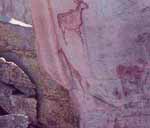
©2001: Tourist Office
Cave Drawings
|
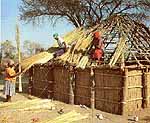
©2001: Tourist Office
Rural dwelling
|
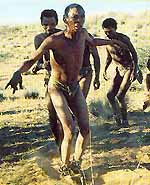
©2001: Tourist Office
San people
|

©2001: Tourist Office
Dancing
|
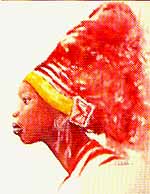
©2001: Tourist Office
Earth Maiden
|
Culture:
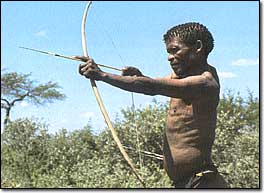
©2001: Tourist Office
|
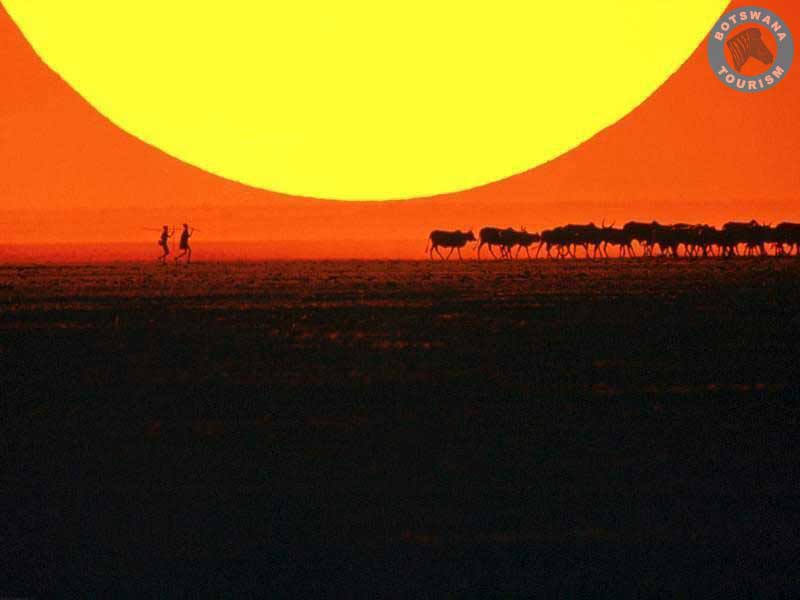
©2001: Tourist Office
|
|
|
Traditionally, Botswana was ruled by chiefs and settled in large villages near rivers and hills. They were successful
agro-pastoralists and fought many wars to protect their livestock. They have attained the skill of smelting copper,
iron, gold and traded salt with neighbouring states. Hunting and gathering was practised by all tribesmen but guided
by very strict traditional conservation strategies combined with sustainable environmental plans embedded in taboos
and myths. This cultural heritage enabled Botswana to preserve vast and diverse species of wildlife and natural resources.
The tradition of the Kgotla practised from the iron-age period laid a very strong and disciplined foundation for modern
democracy and prudent resource utilisation. The aboriginal inhabitants of Botswana, who have made the Kalahari their
home for at least 30,000 years, are the San, or bushmen. The San number about 60,000 today, constituting a small but
fascinating cultural minority in the country. Almost two millennia ago, a Bantu people known as the Tswana arrived,
supplanting the San and now constituting the great majority of the population
|
Last update: 25 April 2008
|

